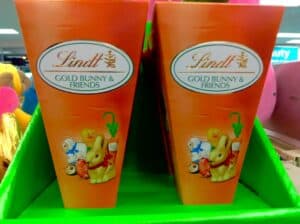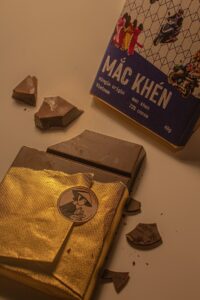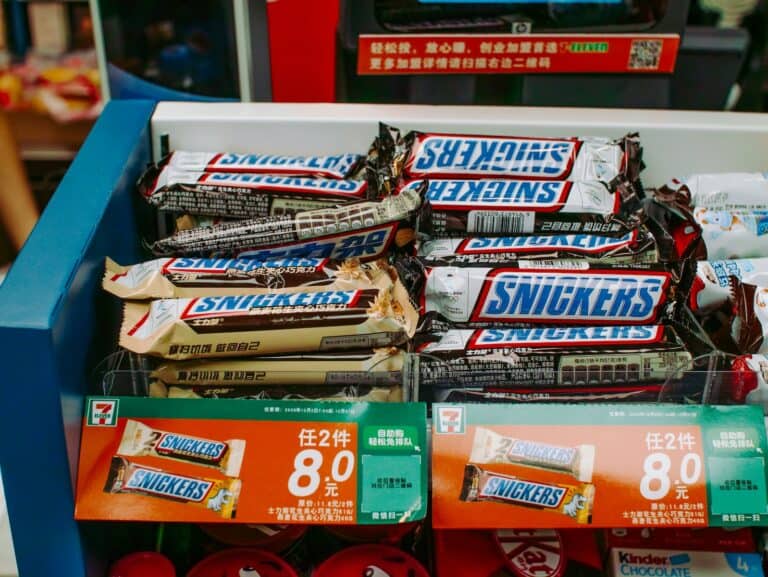Diving into the allure of vintage chocolate advertisements is like opening a time capsule filled with sweet nostalgia. From the 1920s to the 1950s, these ads were more than just marketing; they captured the essence of an era and reflected societal norms, all while making our mouths water.
I’ll take you on a journey through the charming world of retro candy promotions, where gender roles were clearly defined, yet surprisingly, men were also a key audience. These ads are a testament to the timeless love for chocolate and the clever strategies that made it irresistible.
Vintage chocolate ads are not just about the candy; they’re a snapshot of history. Stick with me as we explore their captivating graphics and the stories they tell, which continue to enchant collectors and chocolate lovers alike.
The Evolution of Vintage Chocolate Advertisements

Nostalgia in Chocolate Ads
As a seasoned connoisseur of vintage advertising charm, I’ve always been drawn to the golden days of chocolate marketing. The allure of vintage chocolate advertisements lies not only in their artistic quality but in the potent nostalgia they evoke.
During the early 20th century, chocolate wasn’t just a treat; it was an experience. The ads were crafted to evoke a sense of warmth and comfort that went beyond mere candy and chocolate bars. It was the era of eating chocolate with sophistication and class, a time when every chocolate bar wrapper promised a luxury few could resist.
Historic ad appeal came from ads that effectively used the allure of chocolate to create unforgettable imagery. Cocoa and sugar were not just ingredients but symbols of a sweeter life. And it wasn’t just about eating but about indulging in a ritual that celebrated life’s little joys.
The Art of Chocolate Bar Marketing
The journey through time takes us to chocolate bars that weren’t merely food but a canvas where coffee, nuts, and cocoa blended into an art form. As I flip through my collection of old ads, it’s evident that each chocolate bar advertisement was a snapshot of its time, with kitschy taglines and illustrations that typified the era’s aesthetics.
The chocolate bar itself underwent transformations. From simple cocoa and sugar blends, they erupted into a medley of ingredients including nuts, fruits, and nougat. Campaigns for Kit Kat, for example, emphasized the idea of taking a break, merging chocolate consumption with a moment of reprieve in a busy day.
Chocolate’s Role in the American Dream
Throughout the decades, advertisements did more than just sell a product; they sold a dream. A Milky Way bar was a way to escape to a place more magnificent, if only for a bite. The eating experience was coupled with a narrative that spoke to the aspiration of the American family business and the nation’s spirit.
Exploring the Nostalgia Factor

When I dive into the world of vintage advertising charm, there’s an undeniable tug at the heartstrings. Maybe it’s the whimsy of yesteryear or the sepia tones that evoke a feeling of simpler times, but nostalgia in chocolate ads plays a crucial role in their allure.
The Allure of Vintage Chocolate Advertisements
Through the years, candy and chocolate bars have been marketed in ways that impart a sense of comfort and joy. The chocolate bar, a simple confection, becomes a treasure trove of memories when it’s wrapped in the nostalgic packaging that calls back to a particular era. Chocolate bars from decades past, from brands like Kit Kat and Milky Way, are prime examples.
There’s a genuine art to eating chocolate, which these old ads captured magnificently. They didn’t just sell a product; they sold an experience—a moment of indulgence that promised to be as rich and nourishing as the chocolate itself. The historic ad appeal lies not only in the brand collection but also in the personal stories and memories associated with each bite.
One cannot help but notice how these vintage advertisements immortalized chocolate eating as a universally shared activity, one that transcended age and time. From the bright and bold fonts to the timeless slogans, each advertisement crafted a narrative that still resonates with today’s audience.
Let’s consider the Kit Kat TV commercial. The iconic “Have a break, have a Kit Kat” campaign wasn’t just a catchy jingle; it was a cultural staple. It represented a communal signal to pause and enjoy life’s simple pleasures. Today, when I spot a Kit Kat wrapper that harkens back to its history, I’m reminded of breaks shared with friends or the quiet moment of unwrapping the foil as a child.
Chocolates as Timeless Treats
Whether it was the family business promoting their chocolate eat specialties or the major companies fighting for shelf space, everyone leaned into the power of a good ad. The magic of this commercial history isn’t confined to just one country or city; it spans the entire world, from York to San Francisco.
Gender Roles in Retro Candy Promotions
The Allure of Vintage Chocolate Advertisements
When I delve into the pages of history, vintage advertising holds a unique charm that transcends generations. One cannot help but feel a surge of nostalgia thinking about the historic ad appeal. I’ve been drawn particularly to vintage chocolate ads that showcase not just chocolate bars, but the art of eating chocolate as an experience woven into the fabric of society. There are those timeless depictions that spark a memory or a longing for the simplicity of yesteryear—this is the allure of vintage chocolate advertisements.
Vintage ads from the last century broke the mold with their progressive portrayal of both genders indulging in candy and chocolate bars. It was a significant shift from the usual feminine-focused narratives, where women were the predominant targets for confectionery marketing. This more inclusive approach, featuring a manual worker or a skier taking a candy-fueled energy break, reflects a time when the idea of chocolate bar consumption was universal.
The images from these old ads, while conforming to the gender roles of the forties, offered a rare glimpse of men presented not just as providers or breadwinners but as active participants in the joy of eating treats. The vision of a burly laborer pausing to revel in a sweet reprieve, gives us insight into the nourishing aspect of chocolate, which was marketed to every busy adult as a quick source of energy.
This inclusive marketing strategy was indeed ahead of its time. If you look at ads for products like Kit Kat, you’ll see that this TV commercial staple banked on universally recognized moments of rest in everyone’s daily hustle. “Have a break, have a Kit Kat” — the slogan wasn’t just catchy; it became a communal signal that transcended gender, encouraging everyone to take a moment for themselves with a delightful chocolate treat.
How Men Played a Role in Chocolate Ads

The narrative around chocolate advertising has its roots deeply entwined with candy and chocolate bars designed to appeal to everyone. But if we examine the historic ad appeal closely, we notice the significant role men played, an aspect sometimes overshadowed by the focus on women and children in confectionery marketing.
The Allure of Vintage Chocolate Advertisements
As I delve into vintage advertising charm, it’s fascinating to observe that the brands of yesteryear very often depicted men not just as purchasers of chocolate for women and family but as active consumers themselves. This bucked the conventional trend of ads where women were the central figures in eating chocolate.
Vintage advertisements had an undeniable way of showcasing chocolate bars as the go-to for a sophisticated man. Take for instance the Milky Way ad campaigns which, apart from channeling the spirit of fun, also intertwined the notion of chocolate as a nourishing snack for the hardworking man.
Masculinity and the Chocolate Experience
Men featured in old ads not just in the role of gift-givers, but active chocolate enthusiasts, relishing their own bars with the same enthusiasm as their female counterparts. The chocolate bar, often portrayed as a hearty, substantial treat, aligned well with a rugged, masculine image—fueling the body for work or play.
The depiction of men in these ads wasn’t limited to any one type of man—sportsmen, businessmen, workers, they all found a moment of indulgence in the chocolate experience. This diverse portrayal painted chocolate bars as universally enjoyable, breaking away from the idea that chocolate was a treat reserved for women or children waiting with bated breath for their next sugary delight.
Vintage ads also depicted the social aspect of chocolate being shared amongst male friends or colleagues, emphasizing communal enjoyment. The “break” scene comes to mind instantly. I remember the iconic Kit Kat TV commercial, which perfected the art of eating a chocolate bar. It encapsulated a collective experience, a moment of respite from the busy world—a concept that resonates with everyone, transcending gender stereotypes.
Uncovering the Clever Marketing Strategies Behind Vintage Chocolate Ads
When it comes to the charm of vintage advertising, one cannot ignore the seductive pull of the chocolate industry’s historic campaigns. Leafing through old ads sparks a certain nostalgia—a reminder of the sweet simplicity found in chocolate bars, which were once the height of confectionery innovation.
The Allure of Vintage Chocolate Advertisements
I’ve often been captivated by the nostalgia in chocolate ads—the sepia tones and classic fonts are a visual treat, echoing an era when eating chocolate was portrayed as an indulgence reserved for the most special of occasions. The iconic imagery associated with candy and chocolate bars didn’t just sell a product; they sold a dream. I’m talking about ads from beloved brands that featured children with wide smiles, sharing a chocolate bar, or couples enjoying a post-dinner treat. These vintage advertisements evoked a sense of comfort, positioning a simple chocolate bar as the centerpiece of life’s pleasurable moments.
Diving into the history of these ads, I’ve discovered that the allure of vintage chocolate advertisements lies not only in the warm sense of historical ad appeal but also in the clever marketing tactics used by brands. A consistent message was clear: chocolate bars were the perfect accompaniment to every aspect of life.
Crafting an Experience Beyond the Wrapper
It wasn’t just about the act of eating chocolate; it was the art of savoring it. A Kit Kat TV commercial from years ago perfectly encapsulates this sentiment. The jingle wasn’t simply catchy—it was an invitation to take a break from the mundane and indulge in a communal chocolate eating experience. Watching these ads as a child, I couldn’t help but associate Kit Kat with fun and relaxation.
Moreover, the family businesses behind these brands understood the intricacies of consumer behavior. They crafted messages that transcended generations, embedding their treats into the fabric of society. The Milky Way ads are a prime example where old ads cleverly marketed this bar as a wholesome, nourishing snack that was just as appropriate for adults as it was for children.
Takeaway
The charm of vintage chocolate advertisements lies in their unique ability to transport us back in time. They’re not just relics; they’re narratives woven into the fabric of our collective sweet tooth. As a chocolate lover myself, I find it fascinating how these ads have become coveted pieces of art that tell a story of indulgence and comfort. They remind us that chocolate’s appeal is timeless and that its marketing has always been as rich and layered as the flavors we savor. Whether you’re a collector or simply someone who appreciates a glimpse into the past, these advertisements offer a delightful journey through chocolate’s enchanting history.
Other suggested articles:
- The Therapeutic Benefits Of Chocolate Making Workshops
- The Significance Of Cocoa Rituals
- The Science Of Milk Chocolate
- The Psychology Behind Gifting Chocolate
- The History Of Chocolate
- The Benefits Of Single Origin Chocolate
- The Art Of Chocolate Packaging Design
- The Allure Of Vintage Chocolate Advertisements
